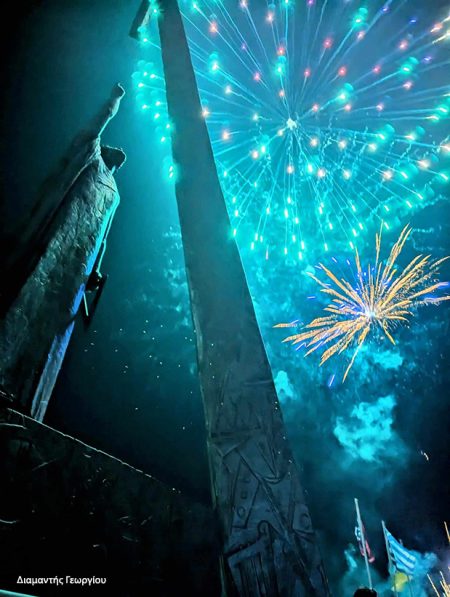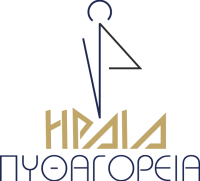Points of interest
Samos Library
The Public Historical Central Library of Samos is located in the city of Samos on the coastal avenue Themistoklis Sofouli. It is housed in a two-storey neoclassical mansion from 1893. The building belonged to the rich timber merchant Miltiadis Georgiou who bequeathed it in 1900 by his will to the Municipality for the creation of a library. The Library of Samos has approximately 30,000 items, while its oldest book dates from the 16th century AD. Today, the Library’s collection covers all fields of knowledge, while many documents relating to Samos constitute a cultural heritage for Greece.
tel: 2273027216
General archives of Samos
The Archives of the Prefecture of Samos are a regional service of the General Archives of the State. Basic purpose of G.A. Samos is the supervision, rescue, collection, classification and indexing of the archival material of Samos, Ikaria and Fourni, as well as the disposal and in various ways the utilization of all this archival wealth. The Archives of the Prefecture of Samos are housed in a building (old prison) granted by the Ministry of Justice to the Ministry of National Education & Religion.
tel: 2273028682
tel: 2273024220
Ai-Giannaki Church
Ano Vathi Open Theater
On the edge of the Vathi or Ano Vathi settlement, above the town of Samos, is the small church of Ai-Giannakis. The church dates from 1799 and stands out for its architecture. Next to the Church, there is the open theater of Ai-Giannakis, where many events take place every year. Vathi or Ano Vathi is considered one of the oldest and largest settlements on the island and has been declared a Historical settlement of infinite beauty.
Salt Lake in Mykali
The area of Aliki has been included in the network of protected areas NATURA 2000. It is located in the southeast of the island, on the road to Psili Ammos and at a distance of 0.2 km before the settlement. Today it is better known for the birds it hosts during the Spring season. The area was previously used as a salt pan which ceased to function around 1965. Later it developed into a wetland, in which a large number of migratory birds (Flamingos, Kingfishers, etc.) find shelter from December to March.
Glyfada Pythagorio
The area of the Glyfada lakes of Pythagoras is located at a distance of one kilometer from the settlement of the same name, on the way to the island’s airport. It is one of the most important wetlands of Samos as a natural refuge for wildlife and migratory birds. It is included in the list of wetlands published by EKBY as well as in CORINE. Mikri Glyfada has water throughout the year and communicates with Megali Glyfada with a continuous flow of water. In the area there are important archaeological findings such as the walls of Polycrates, the Ancient City, the sanctuary of Artemis, the Sacred Way, the Roman baths, early Christian tombs and a church, etc.
Waterfalls - Ampelos
On the north side of Samos and west of the village of Ampelos, at an altitude of 300m. the Ampelos waterfalls are located in the middle of the small “paliomylos” river, which flows east of the Livadaki area without being obvious. The waterfalls are approached via a path that starts from a carriage road, just 200 meters from the village parking lot. The route to the falls is about 1.5 km.
Profitis Elias on Mount Thios
Caves of Mytilini
Ancient Quarries
In the area of Koutsodontis of Mytilini village, at an altitude of 147m. there are 45 caves which are entrances to an Ancient Mine. The entrances are supported by hand-hewn columns. One of the entrances leads to the interior of the hill where (8) more levels were recorded with the same method of support, total depth -70m and length per level 1Km. During the archaic times, materials were mined for the construction of the great temple of Hera as well as other buildings in the area of the Sanctuary as well as for the building needs of the ancient city of Samos. During the Greek Revolution of 1821, the caves functioned as a “Nitro Mine”, where a monk named Ignatios, using the nitrate salts, prepared gunpowder. Visiting the cave requires special equipment and is done with the use of a guide for safety reasons.
Tsakalotrypa cave
of Pythagorion
Near Panagia the Spiliani of Pythagoras at an altitude of 102 meters is “Tsakalotrypa” a Cave that is divided into two sections. The first section is 50m long. approximately and 5-8 m wide. while the second side of the cave has a passage through a narrow recess. Its length is 20m. approximately, its height reaches 2m, while its width is 3m. and has an upward direction towards the surface. Visiting the cave requires special equipment and is done with the use of a guide for safety reasons.
Panagia Sarantaskaliotissa Cave and Pythagoras’ Cave
This is a church found in a cave, which is situated in the west of the island, near Marathokampos, at an altitude of 320 meters and has been named after the forty steps that lead to the cave. The upper part of the cave is divided into two areas. The cave is of historical, religious and athletic importance. At its entrance, a small byzantine church of the 11th century has been built, decorated with frescos of the meta-byzantine era.
At a distance of about 50 meters from the aforementioned cave and at the same altitude, the famous “Pythagoras’ Cave” can be found. It is accessible only by a short, slightly difficult to hike alley, which begins inside the stone-built alley that leads to Sarantaskaliotissa Cave. According to folkloric traditions of the island, this is where Pythagoras hid while being chased by the tyrant Polykrates. This cave has been equipped with lights.
Both caves attract a large number of visitors.
Potami Waterfalls
West of the island, three kilometers outside of Karlovasi, is the area “Potami” where the famous natural waterfalls of Samos. From Potami, one has to walk for 1,5 kilometers, passing by the church of the Transfiguration, the oldest church on the island dating back to the 11th century. The route following the stream is amazing and alternates between the left and right banks over wooden bridges.
The waterfalls are of immense natural beauty and form two small lakes, ideal for the brave ones that dare to swim in their ice-cold water.


